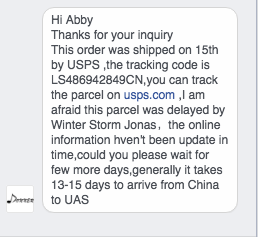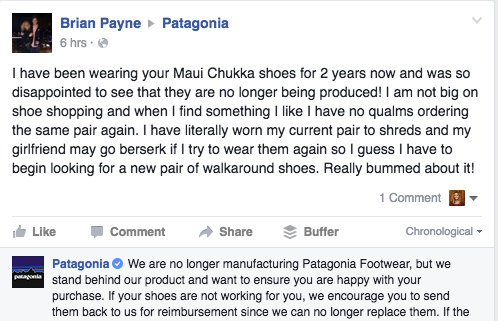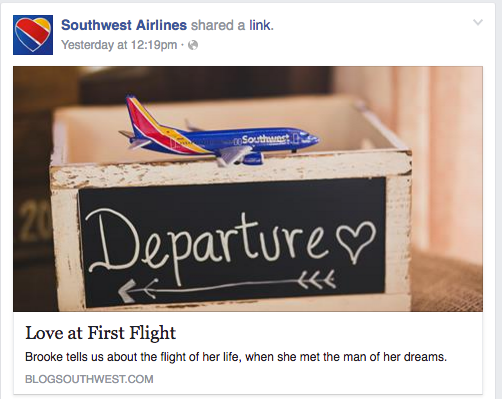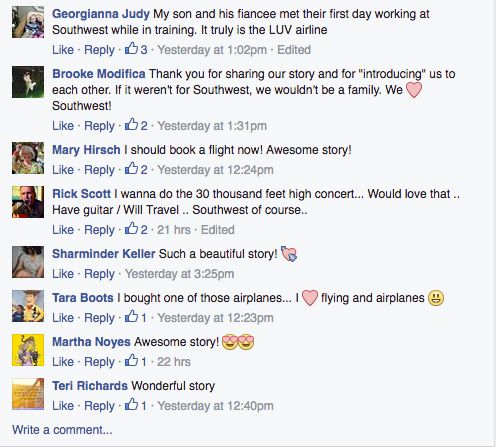
ResourcesEverything in One Place
Facebook Marketing Hacks: How to Do Brand Engagement Like an Agency
If you're a homebuilder looking to save a few marketing dollars by hacking it yourself on Facebook, you'll want to make brand engagement a big part of your strategy. One of the benefits of working with an agency on your Facebook profile is that agencies--at least, the good ones--know how to finesse conversations on Facebook that put a positive spin on your brand. Understanding that every business is subject to negative feedback on Facebook, it's important to know how to navigate those situations when you're all on your own. Similarly, positive interactions can often be nurtured into leads if you play your cards right. The way to get brand engagement by hacking your way to agency status is to watch what others are doing well and mimic it. Similarly, watch what others are doing poorly and try to do it better. Think bigger than your competition here--look to national companies you know and like (and ones you don't) for inspiration. Tip #1: Next time you go to buy a product or service online, try messaging the company's social media team with a question about the product or their company policies. See how quickly someone gets back to you and how helpful they are in answering your question. Make a mental note of what pleased or displeased you about that interaction. Use that to inform how you respond to people who message you on your Facebook page. Example: Recently, I bought a product online that I received no shipping notification for. After two weeks I was beginning to feel uneasy about my purchase and unsure whether I would ever receive it. Instead of filling out a website contact form, I went to the company's Facebook page because I knew I could get a response from a real person.  The person who replied to me could have just given me my tracking code and a link to the USPS site. Instead, they took the extra step of looking up my shipping date and also providing information about the weather delays. In the end I felt like this person helped me by saving me time in tracking down this additional information, and I was left with an overall good feeling about the company. Tip #2: Another great place to learn from other people's mistakes is to check out the visitor posts on a big brand's Facebook page. Are people singing their praises or telling horror stories? Is that brand responding to any of these people in a meaningful way? Marinate on your impression of that brand before and after you read the visitor posts. Ask yourself if you would do business with them. Example: Patagonia is rocking the visitor post section on their Facebook page. Often replying to visitor posts in the same day they're posted, Patagonia makes sure every customer is a customer for life by making them feel seen and heard. One consumer expressed disappointment that Patagonia discontinued his beloved walking shoes, and the company offered to reimburse him for his purchase made two years ago because they could not replace his current pair. This deepens trust in the Patagonia brand, as everyone who visits the page can clearly see from their replies that they stand behind their products.
The person who replied to me could have just given me my tracking code and a link to the USPS site. Instead, they took the extra step of looking up my shipping date and also providing information about the weather delays. In the end I felt like this person helped me by saving me time in tracking down this additional information, and I was left with an overall good feeling about the company. Tip #2: Another great place to learn from other people's mistakes is to check out the visitor posts on a big brand's Facebook page. Are people singing their praises or telling horror stories? Is that brand responding to any of these people in a meaningful way? Marinate on your impression of that brand before and after you read the visitor posts. Ask yourself if you would do business with them. Example: Patagonia is rocking the visitor post section on their Facebook page. Often replying to visitor posts in the same day they're posted, Patagonia makes sure every customer is a customer for life by making them feel seen and heard. One consumer expressed disappointment that Patagonia discontinued his beloved walking shoes, and the company offered to reimburse him for his purchase made two years ago because they could not replace his current pair. This deepens trust in the Patagonia brand, as everyone who visits the page can clearly see from their replies that they stand behind their products.  Tip #3: Look at how users are engaging with different types of post content. See if you can find a brand that's humanizing their content--either by creating feel-good marketing campaigns or simply posting about their customers. Notice the comments on these types of posts. Typically, these posts are full of comments from happy customers and well wishers, creating a sense of goodwill towards the brand that ultimately results in people wanting to do business with that brand. Think of what you can do to humanize your page in the same way these successful companies do. Example: Southwest Airlines has established itself as a brand with heart. Not only is a heart part of their logo, but they live this brand promise on social media, through the content they create, in their marketing, and in real-life interactions with their customers.
Tip #3: Look at how users are engaging with different types of post content. See if you can find a brand that's humanizing their content--either by creating feel-good marketing campaigns or simply posting about their customers. Notice the comments on these types of posts. Typically, these posts are full of comments from happy customers and well wishers, creating a sense of goodwill towards the brand that ultimately results in people wanting to do business with that brand. Think of what you can do to humanize your page in the same way these successful companies do. Example: Southwest Airlines has established itself as a brand with heart. Not only is a heart part of their logo, but they live this brand promise on social media, through the content they create, in their marketing, and in real-life interactions with their customers.  Check out Southwest's recent blog post titled "Every Seat Has a Story: Love at First Flight." In their Every Seat Has a Story campaign, Southwest features personal stories they've collected from people who have flown with them. Is Southwest investing money in creating and promoting this content? Yup! Is this content directly marketing Southwest's products and services? Nope! So what's the value of sharing content like this?
Check out Southwest's recent blog post titled "Every Seat Has a Story: Love at First Flight." In their Every Seat Has a Story campaign, Southwest features personal stories they've collected from people who have flown with them. Is Southwest investing money in creating and promoting this content? Yup! Is this content directly marketing Southwest's products and services? Nope! So what's the value of sharing content like this?
- As a consumer, it tells me I'm not just a number to Southwest. It makes me see Southwest as a company that notices and cares about the people who fly with them. If I have to spend money on travel, that's the kind of company I want my money to go to.
- This content also communicates that Southwest isn't a self-centered company constantly asking for business. It shows they're a company that cares about people.
- It gets other people talking about their own happy experiences with Southwest, which creates more positive brand goodwill.
- It creates authenticity to support their brand promise.
- It makes people want to fly with Southwest because Southwest will care about them more than that other airline company who pissed them off before.
Even though this content isn't directly promotional, it's still promoting the values of the Southwest brand, which drives many people's purchase decisions.  Good luck hacking your way to a better Facebook presence, and don't forget--the easiest way to be the best is to learn from the best!
Good luck hacking your way to a better Facebook presence, and don't forget--the easiest way to be the best is to learn from the best!
